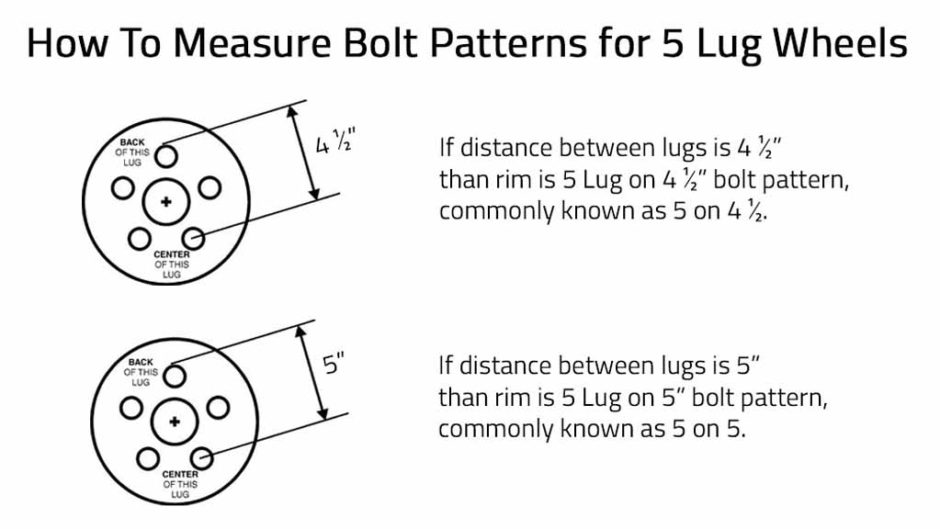Decoding Your Wheel Bolts: A Comprehensive Guide to Sizing
Ever found yourself staring blankly at a wheel bolt, utterly perplexed about its dimensions? You’re not alone. This seemingly small component holds immense importance, literally keeping your wheels securely attached. Knowing how to determine wheel bolt size is crucial for safe driving and proper wheel maintenance. This guide dives deep into the art of wheel bolt measurement, empowering you to navigate the world of threads, pitches, and lengths with confidence.
Imagine this: you're on a road trip, miles from civilization, and suddenly experience a flat tire. You have a spare, but the bolts don't fit! A nightmare scenario, right? Understanding wheel bolt sizing beforehand can prevent such disasters. This seemingly mundane task becomes a critical skill, ensuring your wheels remain firmly planted on the road.
Wheel bolts, those unsung heroes of the automotive world, have a rich history. From the earliest carriages to modern-day supercars, these fasteners have evolved alongside vehicles. Their primary function has remained constant: securing wheels efficiently and safely. Precise measurement ensures compatibility and prevents potential hazards. Getting the wrong size can lead to loose wheels, damage to the vehicle, and even accidents.
So, how do you actually decipher these cryptic measurements? Wheel bolt size is determined by three key factors: thread pitch, length, and diameter. The thread pitch refers to the distance between threads. The length is measured from under the bolt head to the tip. The diameter is the width of the bolt shank. Each of these measurements must be precise to guarantee a secure fit.
Accurately determining wheel bolt size is paramount for several reasons. Firstly, it ensures compatibility with your wheels, preventing damage and maintaining safety. Secondly, it allows for proper torque application, preventing over-tightening or under-tightening, which can lead to stripped threads or loose wheels. Lastly, it simplifies the process of replacing lost or damaged bolts, ensuring you have the right replacements on hand.
One simple method for measuring thread pitch involves using a thread pitch gauge. Place the gauge onto the bolt threads until you find a matching pitch. For length, use a caliper or ruler to measure from under the bolt head to the tip. The diameter can also be measured with a caliper.
Benefits of correct measurement include enhanced safety, preventing wheel detachment; improved vehicle performance, ensuring optimal handling; and reduced maintenance costs, avoiding damage from ill-fitting bolts.
To effectively determine wheel bolt size, first clean the bolt to remove any debris. Then, use the appropriate tools, such as a thread pitch gauge and caliper, to obtain accurate measurements. Finally, compare your measurements to manufacturer specifications to confirm compatibility.
Checklist for measuring: Clean bolt, measure thread pitch, measure length, measure diameter, compare to specifications.
Step-by-step guide: 1. Clean the bolt. 2. Measure the thread pitch using a gauge. 3. Measure the length with a caliper. 4. Measure the diameter with a caliper. 5. Compare measurements to specifications.
Advantages and Disadvantages of Accurate Wheel Bolt Measurement
| Advantages | Disadvantages |
|---|---|
| Ensures Safety | Requires specialized tools |
| Improves Performance | Can be time-consuming |
| Reduces Maintenance Costs | Requires attention to detail |
Five best practices: 1. Use the right tools. 2. Clean the bolt before measuring. 3. Double-check your measurements. 4. Consult manufacturer specifications. 5. Seek professional help if unsure.
Five Real Examples: (Detailed examples would require specific vehicle makes and models, but general examples can be provided.) 1. Replacing a lost bolt on a Honda Civic. 2. Upgrading wheels on a Jeep Wrangler. 3. Repairing a damaged wheel stud on a Ford F-150. 4. Installing aftermarket wheels on a BMW. 5. Changing a flat tire on a Toyota Camry.
Five Challenges and Solutions: 1. Rusted bolts: Use penetrating oil. 2. Damaged threads: Replace the bolt. 3. Inaccurate tools: Use calibrated tools. 4. Difficulty reading measurements: Seek professional help. 5. Missing specifications: Consult online resources or a dealer.
FAQs: 1. What tools do I need? A thread pitch gauge and caliper. 2. What is thread pitch? The distance between threads. 3. What is bolt length? The measurement from under the head to the tip. 4. What is bolt diameter? The width of the shank. 5. Where can I find specifications? Online resources or a dealer. 6. What if my bolt is damaged? Replace it. 7. What if I can't find the right size? Consult a professional. 8. Why is this important? For safety and proper wheel function.
Tips and tricks: Use a magnifying glass for better visibility, ensure the thread pitch gauge is properly seated, and clean the caliper jaws for accurate readings.
Understanding how to measure wheel bolt size is not merely a mechanical skill; it's an act of empowering yourself as a car owner. From preventing roadside emergencies to ensuring optimal vehicle performance, the ability to correctly measure these vital components provides a sense of control and confidence. By mastering the techniques outlined in this guide, you'll be equipped to tackle wheel-related tasks with precision. This knowledge translates to enhanced safety, reduced maintenance costs, and a deeper connection with your vehicle. Remember, a little knowledge goes a long way, especially when it comes to the safety and performance of your car. So grab your tools, embrace the challenge, and empower yourself with the knowledge of wheel bolt measurement. Your wheels—and your peace of mind—will thank you.
Tile flooring patterns ideas for entryway make a statement
Crafting your perfect whatsapp profile picture
Finding the right healthcare a guide to dr hung nguyen in torrance














